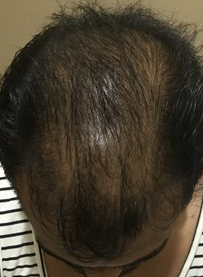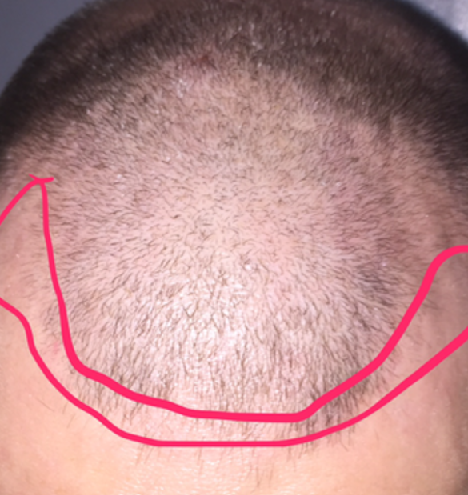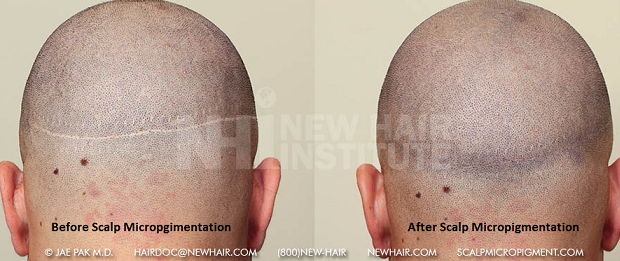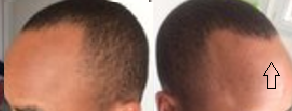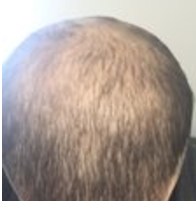You have a pattern of balding that indicates that you will probably lose all of the hair on the top of your head, maybe the frontal forelock will remain, maybe not. Based upon your skin color, I suspect that you may have an Indian heritage which means to me that your donor supply will be lower than the donor supply of the typical Caucasian. Your doctor needs to build a Master Plan with you, measure your donor hair density and donor supply for the long term. This will determine not only what you need now but what you will need in the future as well. I suspect the first surgery will take at least 2,000 grafts and further surgeries in the next few years may be required as you lose the rest of the hair on your head. I also suggest that you consider taking the drug Finasteride to protect the hair that you have left for both the short and long term.
These bumps may be caused by too much skin on the grafts or grafts may not have been placed flat and flush with the surrounding skin at the time of the transplant. A repeat transplant with single hair grafts that have the skin trimmed off and placed flush will overwhelm the problem and address much of it, but it will still be there.
A natural hairline is one where someone never comes up to you and says “you had a great hair transplant”. A natural hairline created by a hair transplant is one that is undetectable by your friends, even those who have lost their hair.
When asked if transplanted hair will last, I always tell patients that transplanted hair will last as long as the hair in the back and sides of the head, which generally last a lifetime. However, transplanted hair can undergo senile alopecia and I have occasionally seen people’s transplanted hair thin out many years after the transplant but this is very rare. Generally, you can expect transplanted hair to last well into your senior years.
A hair transplant in women are often not a good idea because the donor hair is often miniaturized and these miniaturized hairs, when transplanted, will continue the miniaturization process. A better treatment for women with thinning hair is Scalp MicroPigmentation.
What I need is a frontal picture with your hair pulled back and your eyebrows lifted high so that your forehead creases. That shows me the anatomic points that allows me to determine the proper place of the hairline. Then your question can be answered. This picture suggests hair loss in the front as well as the large crown loss shown in the picture you supplied. You should send photos of the frontal area as well so that we don’t give you half an answer to your question.
You have excessive crusting as a result of poor post-operative washing techniques, or absence of them. An FUE is treated just like a regular hair transplant with regard to the recipient area, but the donor area has open wounds which require daily washing with soap and water. Within 3 days of surgery, you can resume full activities, heavy exercises if you wish. The recipient area requires daily washes as well to keep the recipient area free of crusts. I generally recommend the use of a sponge and supply my patient with a surgical sponge to fill with soapy water and press on the recipient area daily. By repeating this daily, all crusts can be washed off without any fear of losing grafts. IF any crust are present, use a Q tip and dip it into soapy water, and roll it on the crusts and that will lift them off without dislodging them, but never rub them, just roll the Q tip on the recipient crust. I like to see no evidence of any crusting in the recipient area and the crusts from the donor area gone in 7-10 days with daily washing much like the two patients on the right.
I don’t like the idea of anyone removing grafts that have scabs on them because we have published a paper in a formal medical journal, that when a person pulls off a scab (crust) from a recipient area in less than 12 days, the risk of losing the graft is very high. Put a shampoo on your head and let it sit for 10-15 minutes, then gently work the crusts with your fingers. This will take days to get the crust off so that you do not disturb the grafts. See the medical paper we wrote in a major journal below in the web reference that proves my point. Look at the two patients on the right, both one day after FUE sessions and both clean without crusts.
It was a 1,000 graft FUE surgery when I was 22. I experienced severe shock loss post surgery and lost plenty of native hair all around especially from the top. However, I did see some results in the front. I want to do another surgery to improve my situation but fear the loss of more native hair. I don’t want to be on medication such as Finasteride due its side effects. Can you’ll suggest me what to do?
Part of the reason I don’t do surgery on 22 year-old men is that they often develop shock loss, lose more native hair (a normal evolution but accelerated from the transplant when you were 22) and then you have to chase it. The real question is what will be your final hair loss pattern and will you have enough hair to follow the loss to its normal completion? I can usually answer this in young men under 26, but not in men 22 or 23. I consider doing a hair transplant on a 22 year-old like you, malpractice on the part of the doctor.
The single best treatment for this is Scalp MicroPigmentation. The scars can be hidden so no one will even know you have a scar even with a shaved head.
Yes, Keratosis Pilaris is a benign condition and it is harmless. Some people describe these bumps as ‘goosebumps’. If it produces itchiness and dryness it can be treated with lotions and lanolin. If the appearance of these bumps bothers you, soften your skin with lotions. Treatment can ease the symptoms and help you see clearer skin and have less itch. This is not a contraindication for hair transplants
I will assume from these pictures that your hair is coarse. The arrow I placed on your photo shows the location of the middle of the new hairline and a mature hairline shape. If I am right, then the number of grafts to do this job would be in the range of 1,200-1,300. If your hair is finer, then it will take more grafts. It might take 2,000 grafts to get a reasonable result with fine hair. Everyone is different so the amount of grafts required reflect not only the thickness of the hair itself, but the area that has to be covered. This takes an experienced surgeon to do proper estimates.
I am not sure why you don’t have enough donor hair. I will assume that you had already exhausted your donor area and now want more hair or more fullness. This can be achieved with beard hair but it may have a different characteristic than your scalp hair. Body hair is a poor choice as it has less quality. I recommend Scalp MicroPigmentation as a good alternative for more fullness.
Page 356 of 636


